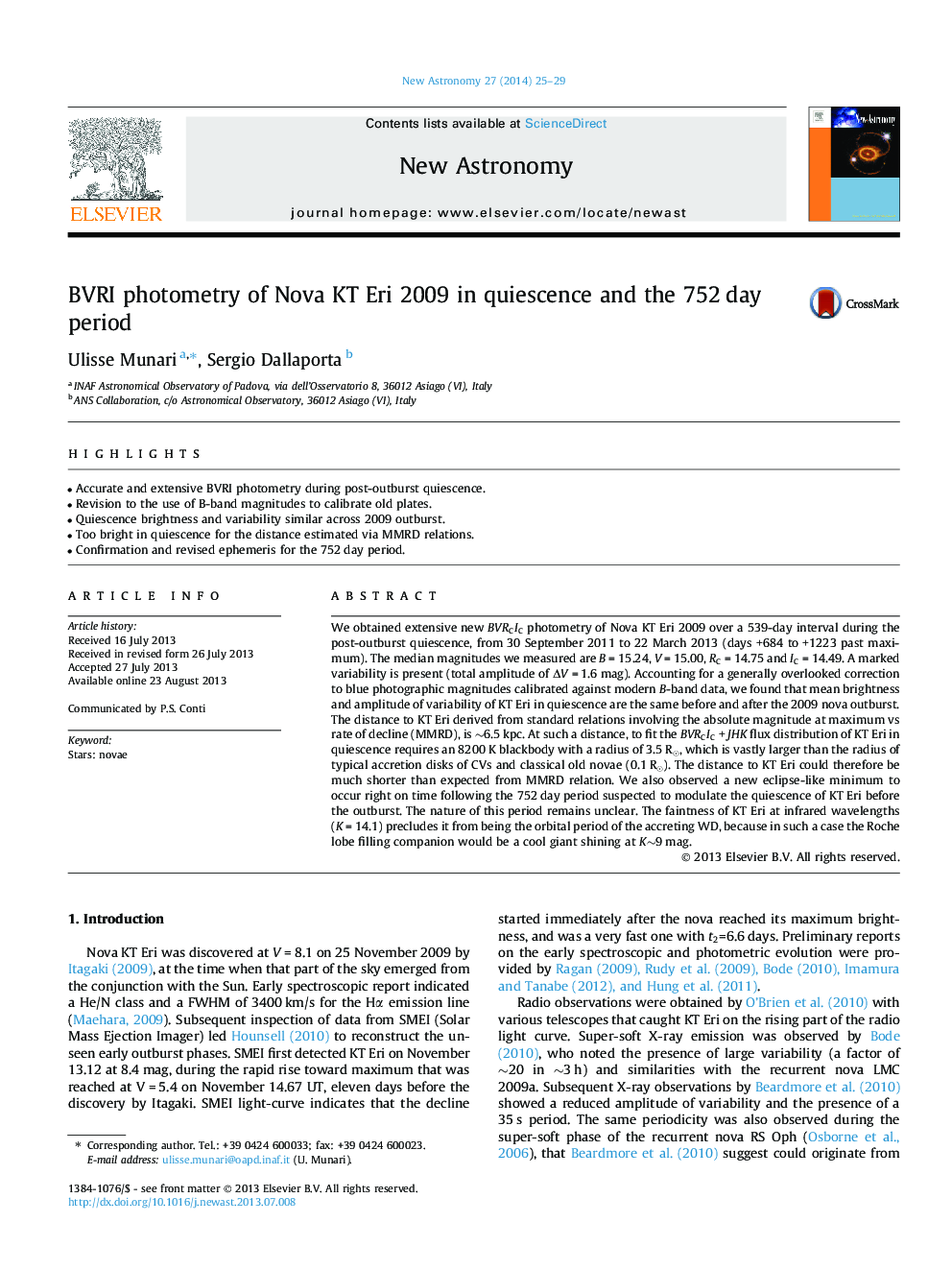| کد مقاله | کد نشریه | سال انتشار | مقاله انگلیسی | نسخه تمام متن |
|---|---|---|---|---|
| 1779047 | 1523751 | 2014 | 5 صفحه PDF | دانلود رایگان |

• Accurate and extensive BVRI photometry during post-outburst quiescence.
• Revision to the use of B-band magnitudes to calibrate old plates.
• Quiescence brightness and variability similar across 2009 outburst.
• Too bright in quiescence for the distance estimated via MMRD relations.
• Confirmation and revised ephemeris for the 752 day period.
We obtained extensive new BV RCRCICIC photometry of Nova KT Eri 2009 over a 539-day interval during the post-outburst quiescence, from 30 September 2011 to 22 March 2013 (days +684 to +1223 past maximum). The median magnitudes we measured are B = 15.24, V = 15.00, RCRC = 14.75 and ICIC = 14.49. A marked variability is present (total amplitude of ΔVΔV = 1.6 mag). Accounting for a generally overlooked correction to blue photographic magnitudes calibrated against modern B-band data, we found that mean brightness and amplitude of variability of KT Eri in quiescence are the same before and after the 2009 nova outburst. The distance to KT Eri derived from standard relations involving the absolute magnitude at maximum vs rate of decline (MMRD), is ∼6.5 kpc. At such a distance, to fit the BV RCRCICIC + JHK flux distribution of KT Eri in quiescence requires an 8200 K blackbody with a radius of 3.5 R⊙, which is vastly larger than the radius of typical accretion disks of CVs and classical old novae (0.1 R⊙). The distance to KT Eri could therefore be much shorter than expected from MMRD relation. We also observed a new eclipse-like minimum to occur right on time following the 752 day period suspected to modulate the quiescence of KT Eri before the outburst. The nature of this period remains unclear. The faintness of KT Eri at infrared wavelengths (K = 14.1) precludes it from being the orbital period of the accreting WD, because in such a case the Roche lobe filling companion would be a cool giant shining at K∼9 mag.
Journal: New Astronomy - Volume 27, February 2014, Pages 25–29